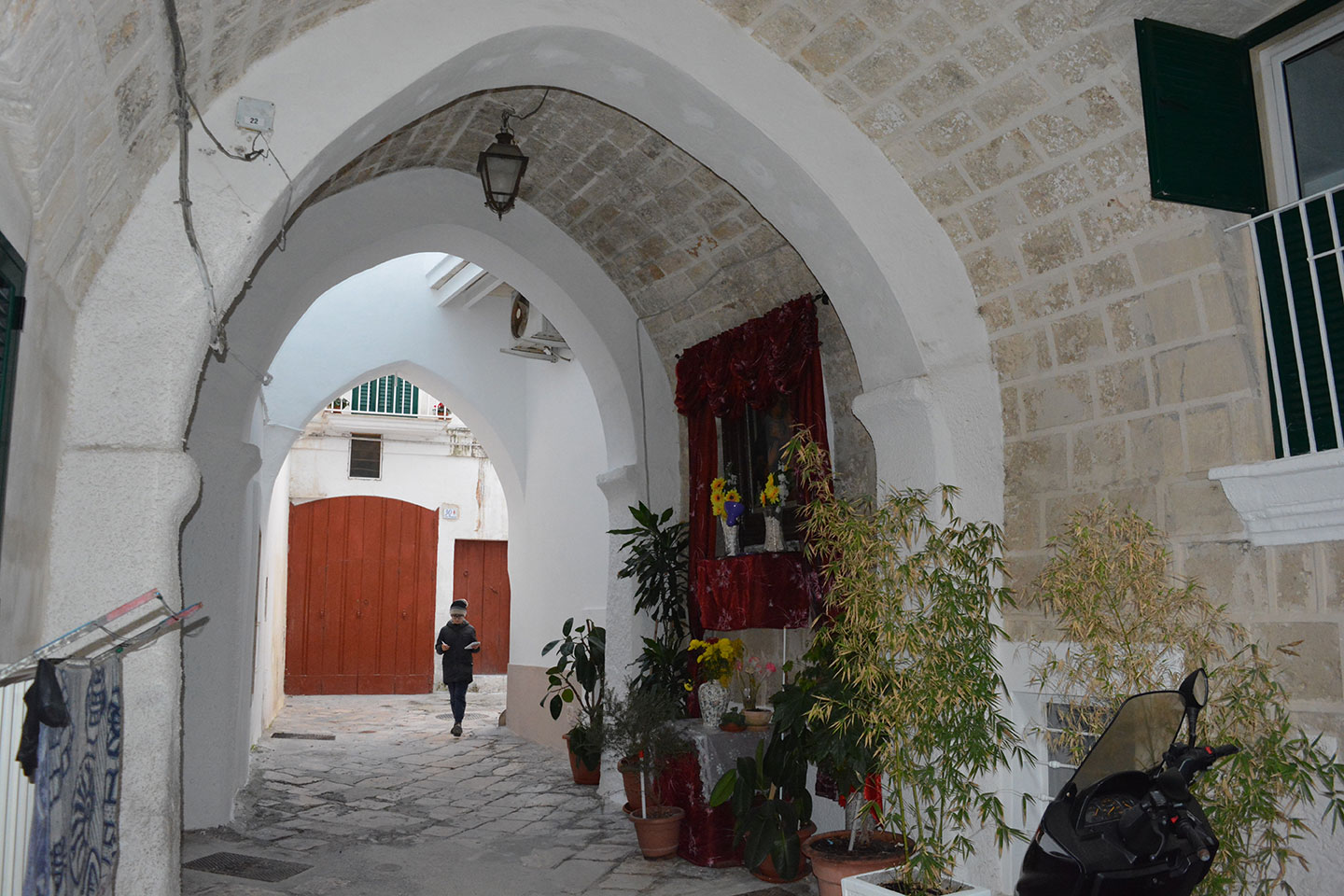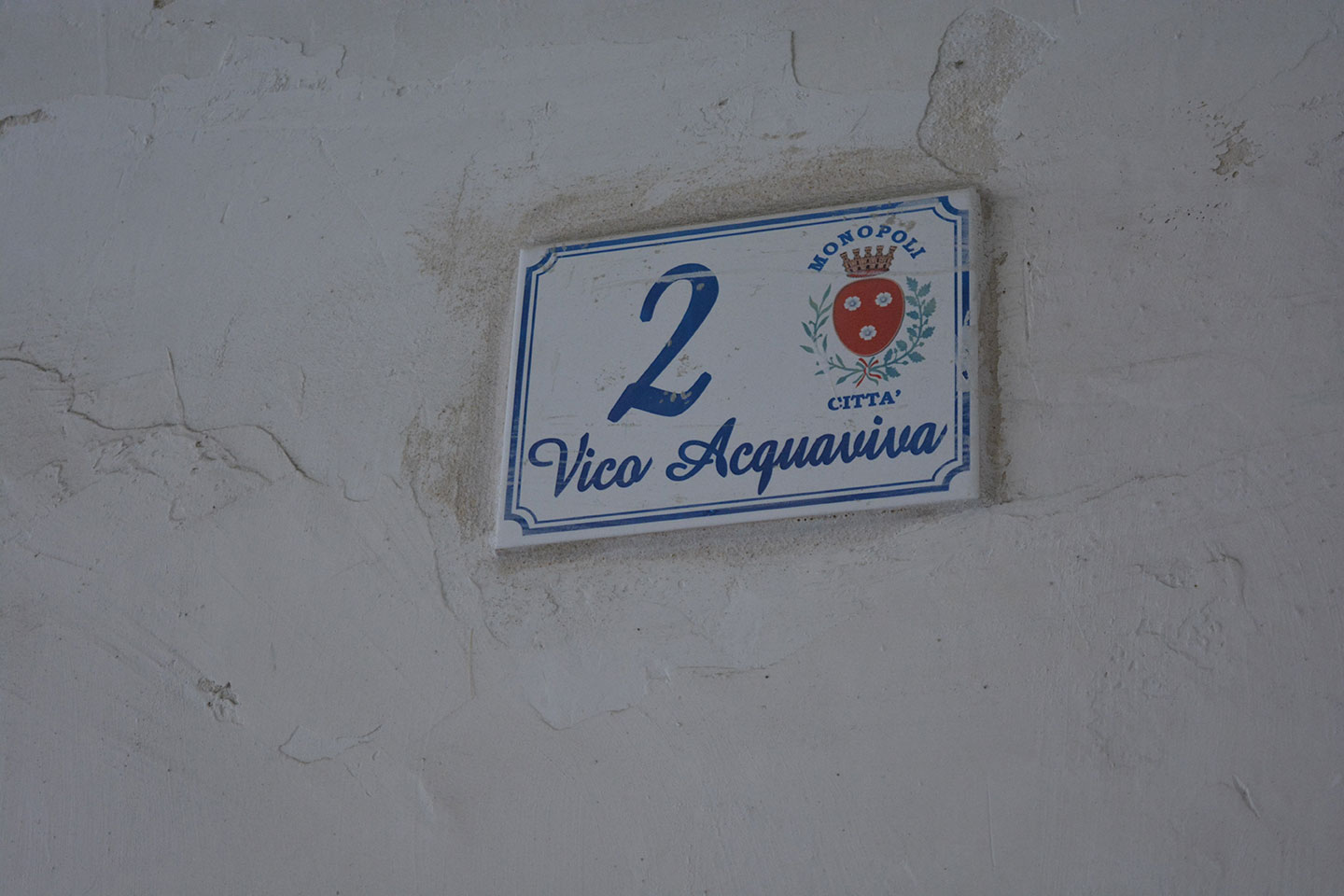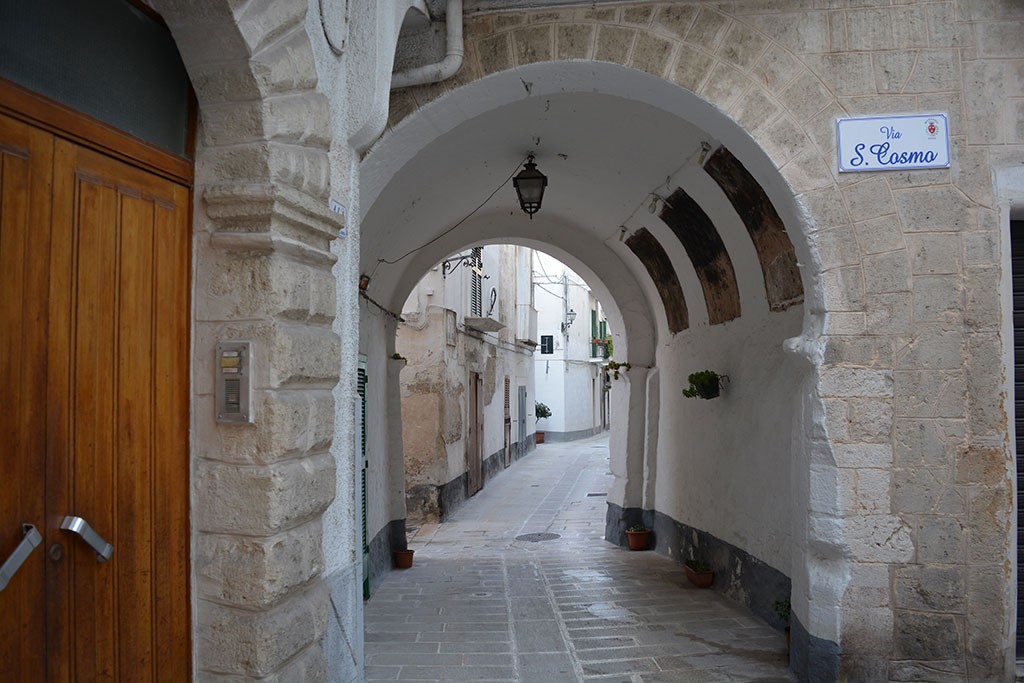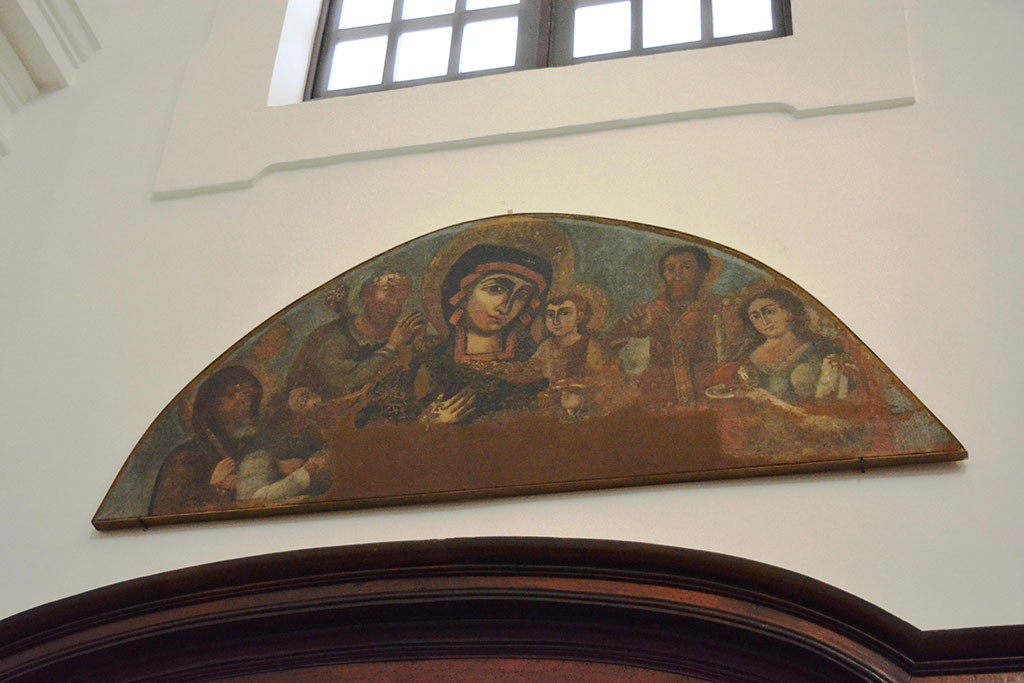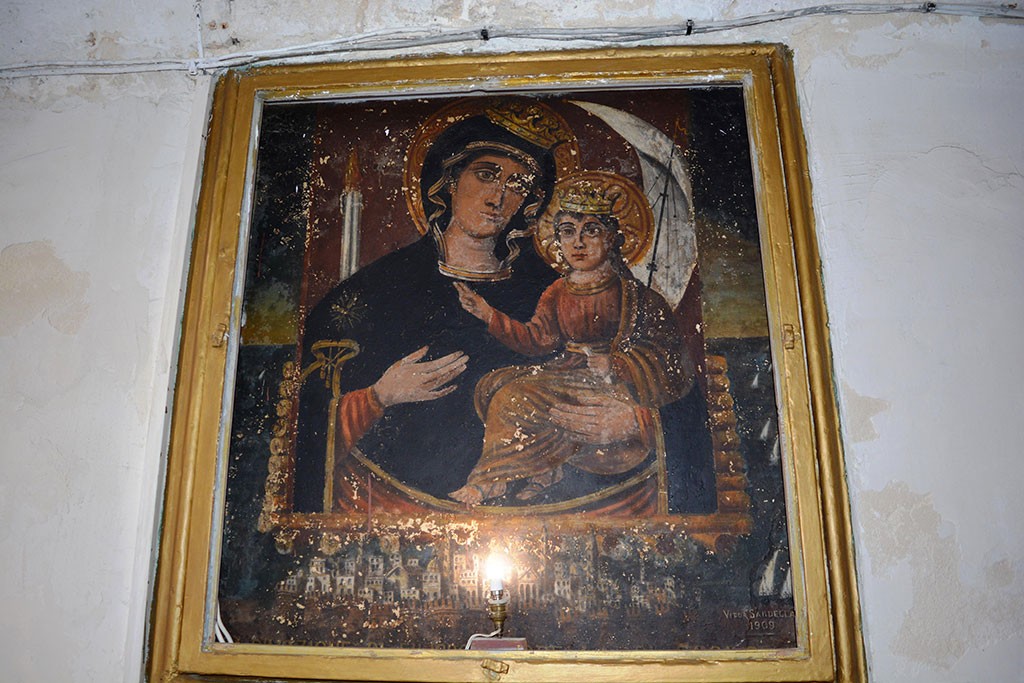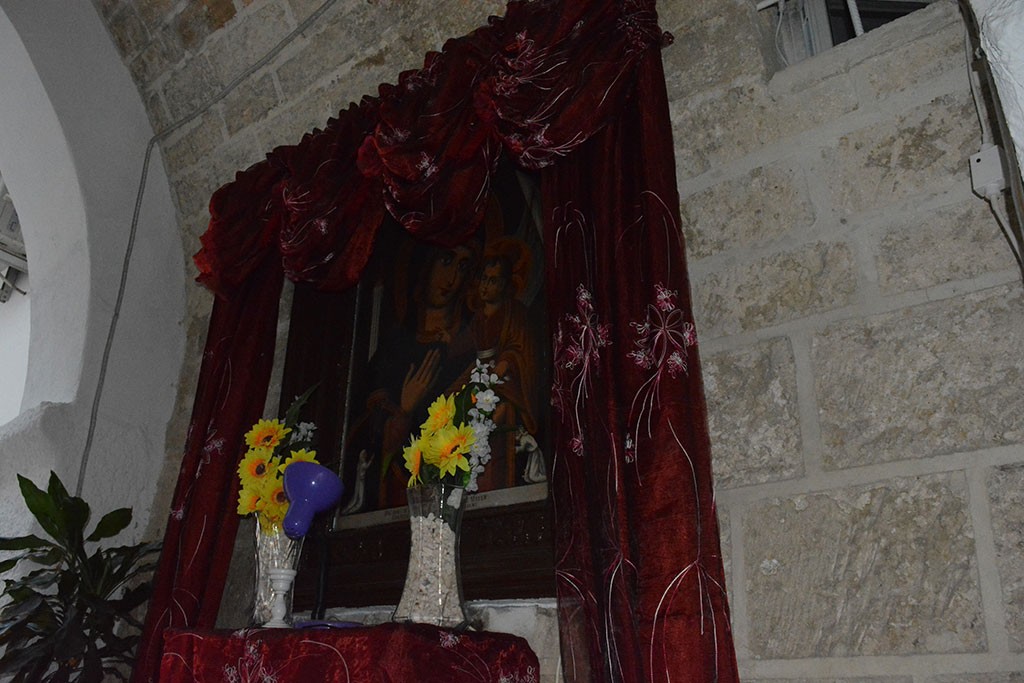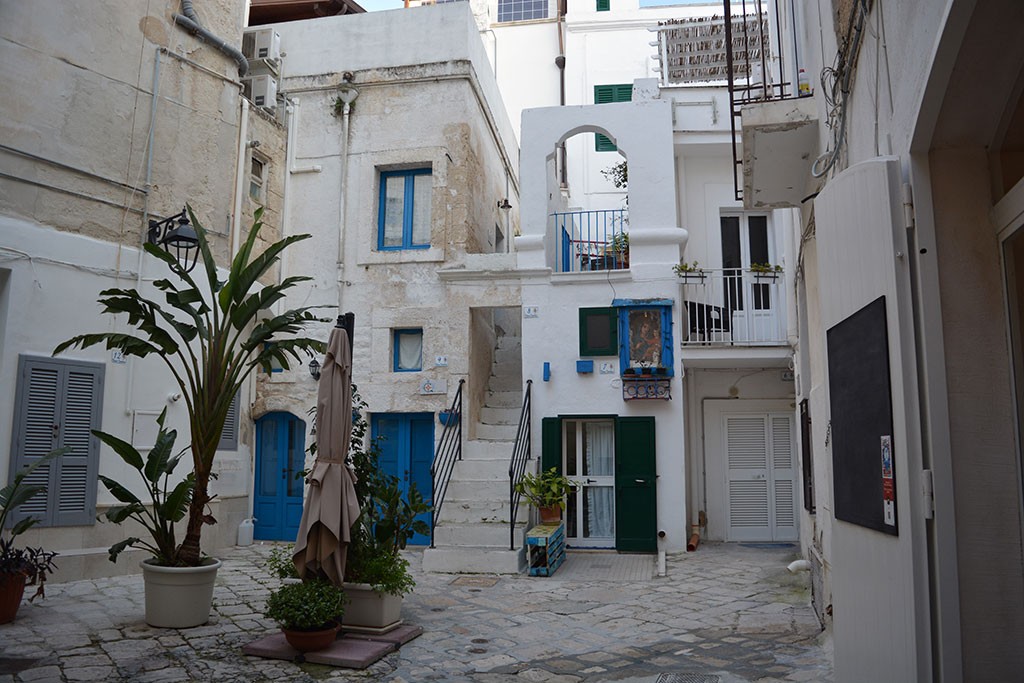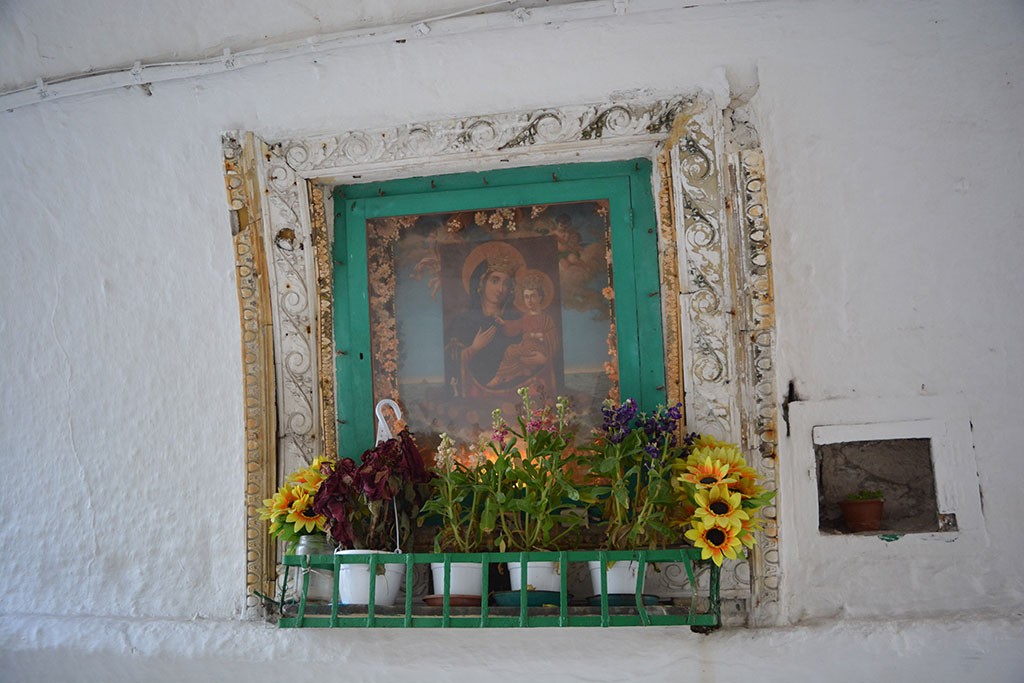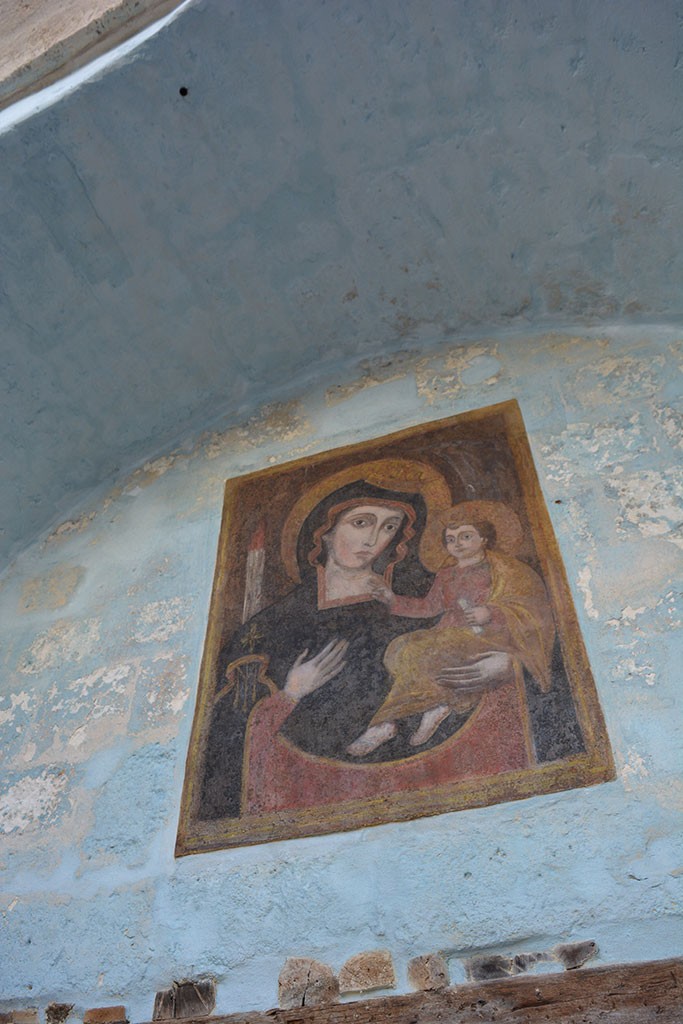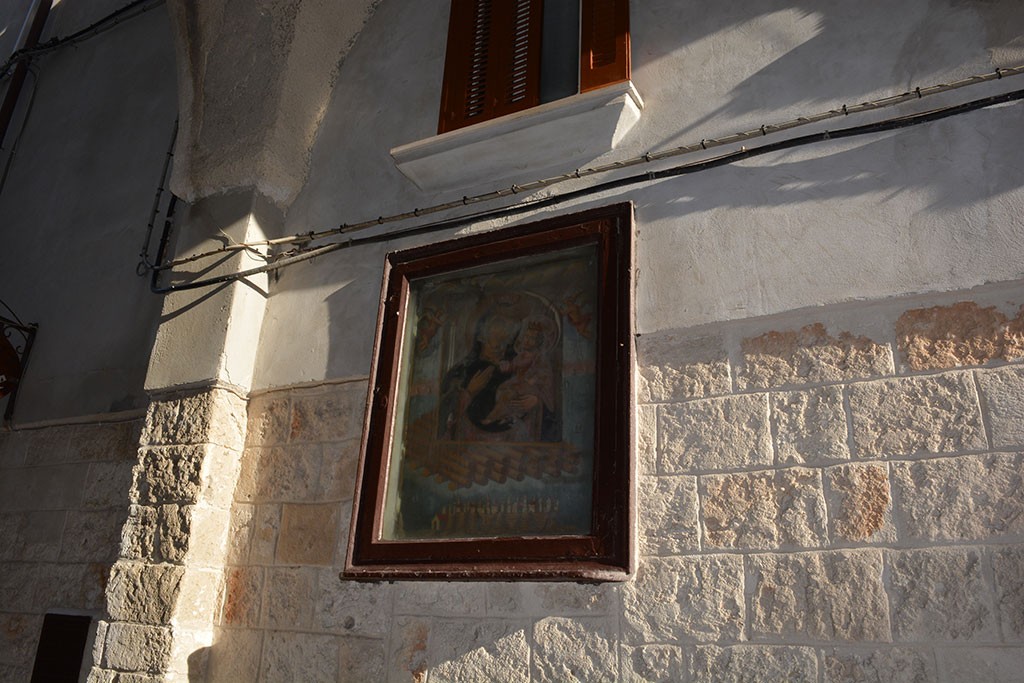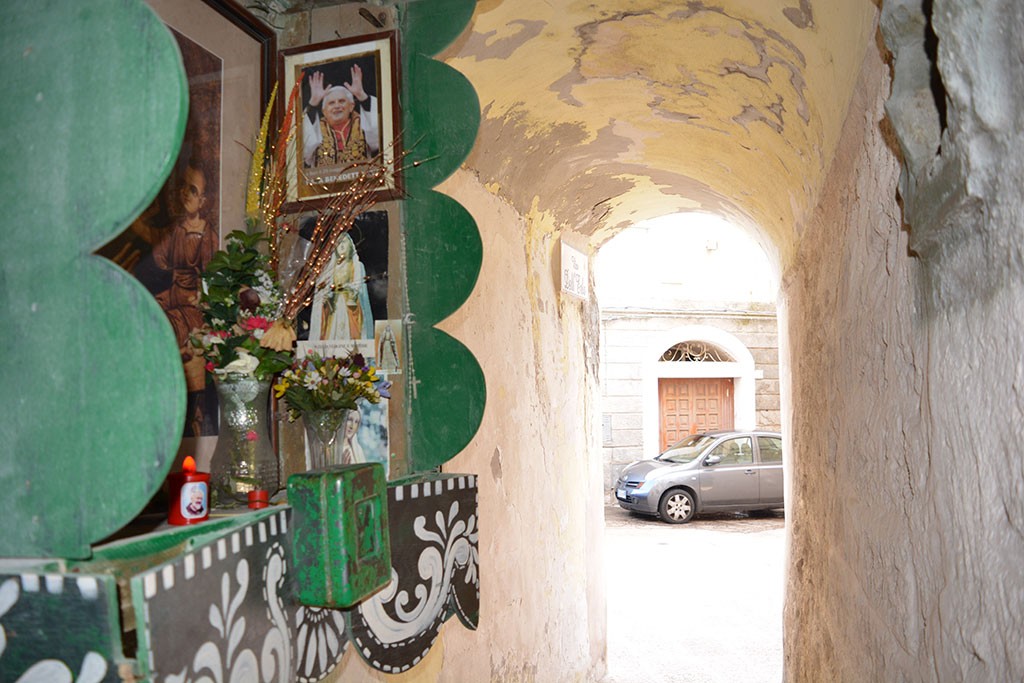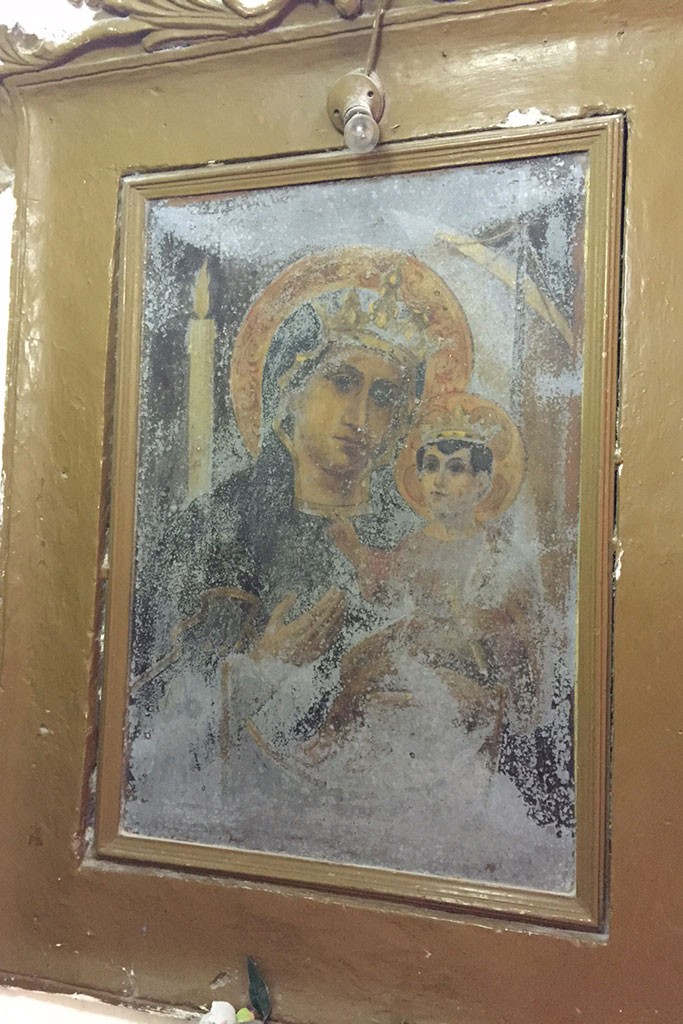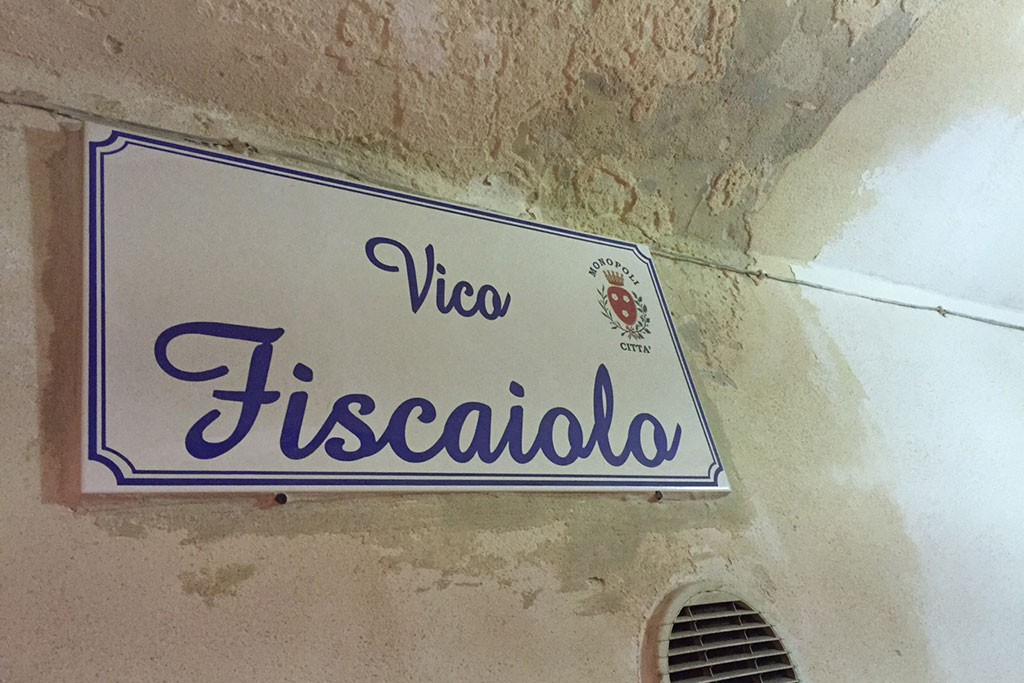It is really nice going around Monopoli, an old fisherman’s town, and discovering the votive aediculas devoted to the town protector, the Madonna della Madia. The figures of the aediculas are inspired by an old religious icon that arrived by sea and is still preserved in the Cathedral. Local people always have a picture of the Madonna at home. People often put it outside according to the old tradition of the votive aediculas, a tradition which dates back to ancient Rome, created by Lari with examples still surviving in Pompei and old Ostia. The word aedicula comes from the latin word (aedes) which means small temple. They are expressions of faith left for the safekeeping of travellers which still survive on the streets of Naples, the capital of the kingdom of the South. The aediculas are either on the nineteenth-century town walls (murattiano)or in the town itself. It’s here that they become more fascinating as they are sheltered under charming arches allowing houses to have rooms instead of simple passages above the streets. Below the arch then becomes a shrine, a place to pray. Don’t be surprised to see people making the sign of the cross and kiss the picture while walking past. You will certainly be struck by the beauty of the aediculas. It’s a good opportunity to visit this ancient fishermen’s town discovering its monuments and the religious aediculas displayed on the outer walls of the houses. It’s a satisfying, effortless walk full of interesting sights.
Tempo richiesto
2 h
Grado di accessibilità
Massimo
Area
Centro storico
Mezzo
A piedi on in bici
From the Cathedral
Let’s start from the arch of the Cathedral. On the right there is an enormous wall with 10 statues of different saints coming from the sixteenth-century triumphal arch (retablo). In the old Romanesque cathedral there is a framed icon of the Madonna.
There is saint Francesco d’Assisi, Saint Domenico, Isaia, Geremia, Ezechiele, and they are probably works by Ludovico Fiorentino who was here in the sixteenth century. Some statues are slightly damaged because of lightning which on Christmas morning in 1518 entered the church and struck the main altar during the third solemn mass. The two missing statues are outside the church of Saint Francesco da Paola in the suburbs of the town.
-
Surrounding area (maps)
On the high altar
When going into the Cathedral you can see in the distance the second and highest altar. Here, following an Andalusian model, you can see the icon which inspired all votive aedicolas in the town. It is a Byzantine Madonna odigitria (in greek, the woman who leads/guides)which follows the model of the Madonna of Costantinople. According to tradition she will come from the sea on a raft. The votive aedicolas just repeat the holy picture which local people call with the Greek word “icon”. (in Greek meaning ‘image’). On two shelves either side of the icon of the Madonna of Costantinople (known locally as Madonna Della Madia) two Carrarawhite-marble statues stand out. They are the Arch angel Saint Michele and Saint Giuseppe made by Giuseppe Sammartino (Naples 1720 – Naples 1793) who was famous for his Veiled Christ, a marble sculpture made in 1753 for the Santa Maria of Pity chapel of princes of Sangro Sansevero in Naples. Tourists come from all over the world to visit the statue. Now, let’s go into the sacristy in the basement of the Cathedral. On the left side there’s the Martyrdom of Saint Giustina’ ascribed to Paolo Caliari known as ‘the Veronese’ (Verona, 1528 – Venice, 19th April 1588). Opposite you can see a semilunar picture that was once a votive aedicola on the inside of the Door of the Port. Today there is a perfect copy of the original. Let’s go and have a look.
-
Surrounding area (maps)
In the heart of the ‘old town’
Before going in let’s have a look at the mariana ediculas widespread in the alleys of the old town just to enjoy the Kasbah style which dates back the Arabian occupation (847-871). Let’s go and see the arch of Sallustio in via Barbicana 61, where on the one side you can see the votive picture and on the other side a series of frescos damaged by time. They are easy to find even if you don’t have a city map. You can also ask the seafaring people who will be very pleased to show them. Here are some useful addresses: The aedicola in via Peroscia, vico dell’Erba1 ,vico Seminario in via Cavaliere 20, chiasso Fioriaio, chiasso Brescia and the aedicula placed in piazza Garibaldi, 8 which is very characteristic because it is painted on the wall. According to some people, the aedicula situated in vico pugliese has been obtained from the narrow entrance door formerly called postern which once led to the first castle of the town which was destroyed in the fifteenth century after the fights between the Angevins and the Aragonese. This aedicule is situated together with the aedicula placed in via Cimino 1 where you can admire a nice picture of the Madonna della Madia as well as a stone ring where people tied up their horses many years ago. Let’s go along vico pugliese and see the highest window of the house on the right which is unique due to its drawing.
This gothic window is framed by a ‘relief’ decoration known as ‘denti di sega’ or ‘saw tooth’, typical of the Angevin Age. That’s the only thing to be left of the castle. It gave its name to one of the town doors, Porta Castri, rising in front of the Bishop’s Palace years ago.
-
Surrounding area (maps)
The highest aedicula
Let’s go to vico Acquaviva. Here, on a white sail background the Madonna of the Madia is portrayed on a raft and below it you can see the town with small-scale houses. Let’s descend toward the aedicola in via San Cosmo 16 to look for the one placed in via Babacana where the Madonna of the Madia bows down during the procession. Here the arch is very low so, those who carry the effigy on their shoulders need to bend down on their knees in order to get through.
The highest effigy of the Madonna della Madia is on the top of the Cathedral while the lowest one is on a pavement of Porta Vecchia. Some time ago a ‘madonnaro’ (Madonna drawer) drew it using cement instead of chalk, the result was fantastic. Let’s admire on the floor a horizontal aedicula with its splendid colours and raised shapes. What is the nicest aedicula? It’s difficult to say. Each of them is unique with its own history. In this very curious treasure hunt can you find one of the most typical aedicule in an alley, it’s chiasso Carmelano. Don’t you think it’s really charming?
-
Surrounding area (maps)
Events in Monopoli
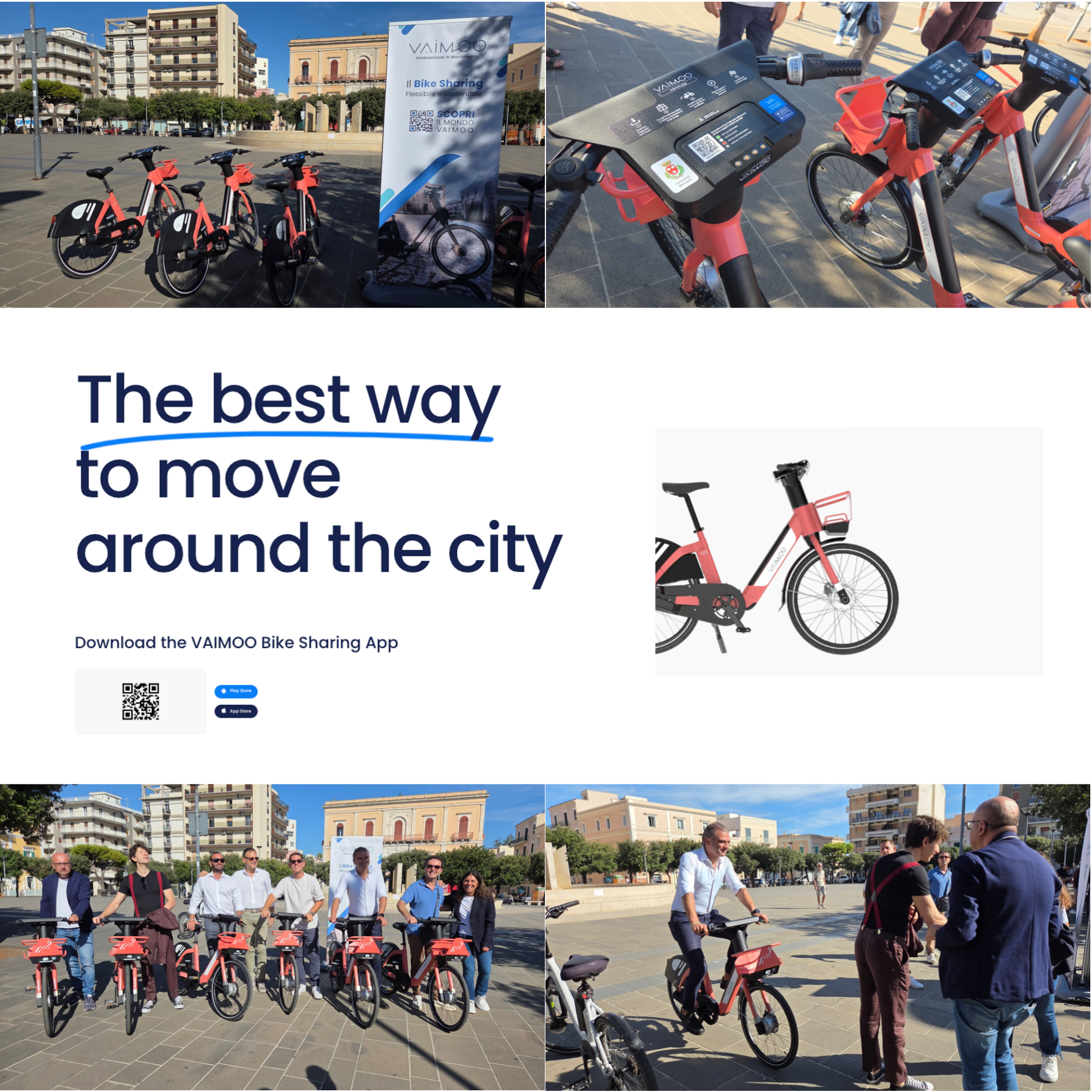
VAIMOO Bike Sharing has arrived in Monopoli
26 September 2025Bike sharing starts: 45 stations and 200 e-bikes. The service will be managed for a duration of nine years. Cost of…
Read More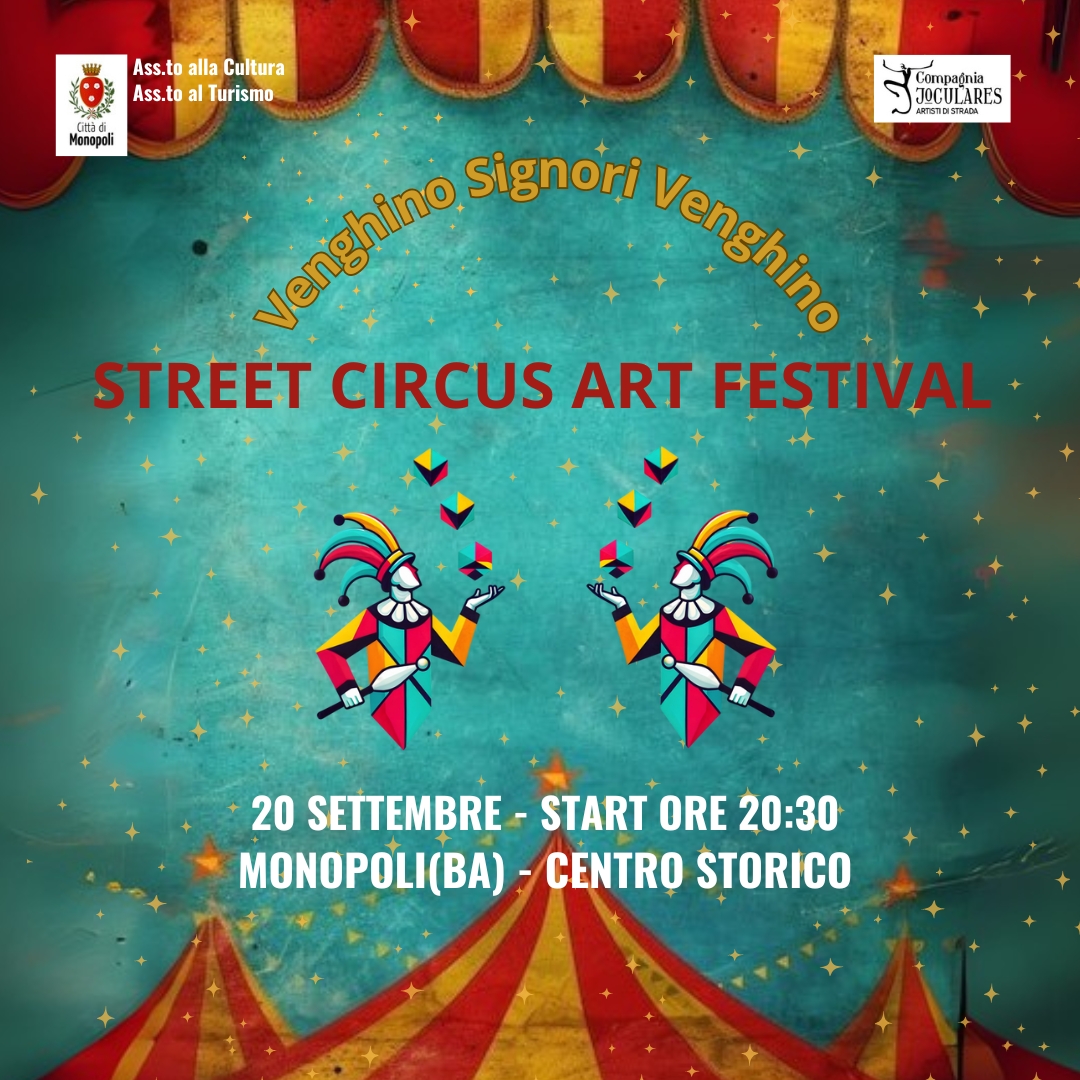
“Venghino Signori Venghino” Street Circus Art Festival – September 20, 2025
11 September 2025Saturday 20 September 2025, starting from 8.30 pm, Monopoli will be transformed into a large open-air stage with “Venghino Signori Venghino”…
Read More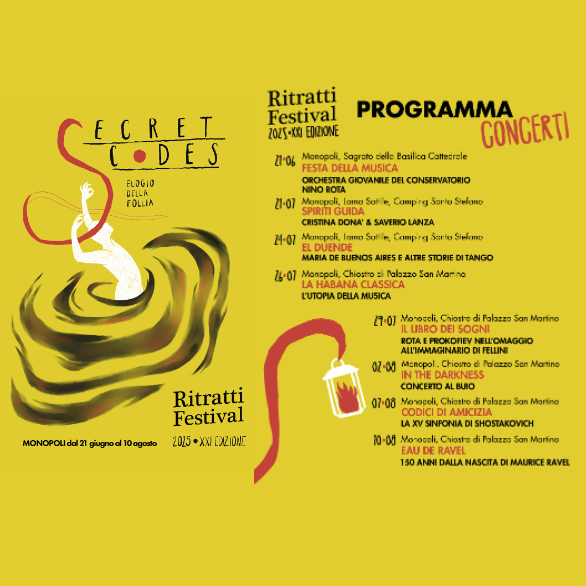
Ritratti Festival: 12 concerts from July 3 to August 10, 2025, in Monopoli
16 July 2025A musical experience capable of intertwining art and landscape, memory and experimentation, and promoting the talent of emerging young artists alongside…
Read More
Experience Summer 2025 in Monopoli | Events Schedule
15 July 2025Events, City Festivals, District Festivals… Enjoy your Summer 2025 in Monopoli, discover the Events Program! Download the program Potrebbe interessarti… Tourism…
Read More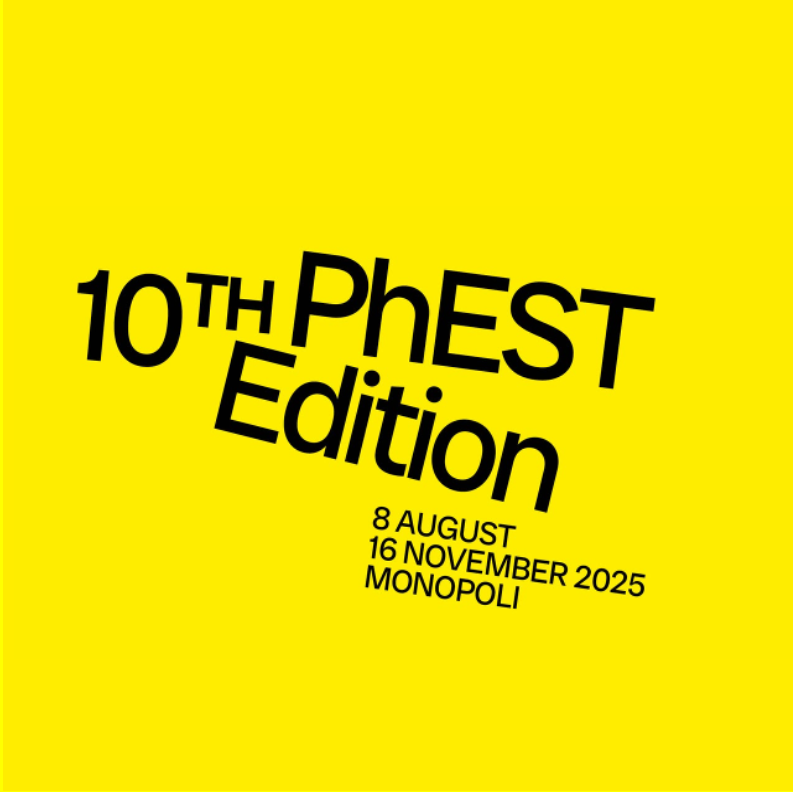
PhEST – International Festival of Photograpy and Art | MONOPOLI 08/08-16/11 2025
15 July 2025From August 8 to November 16, 2025, PhEST – International Festival of Photography and Art celebrates its tenth edition in Monopoli,…
Read More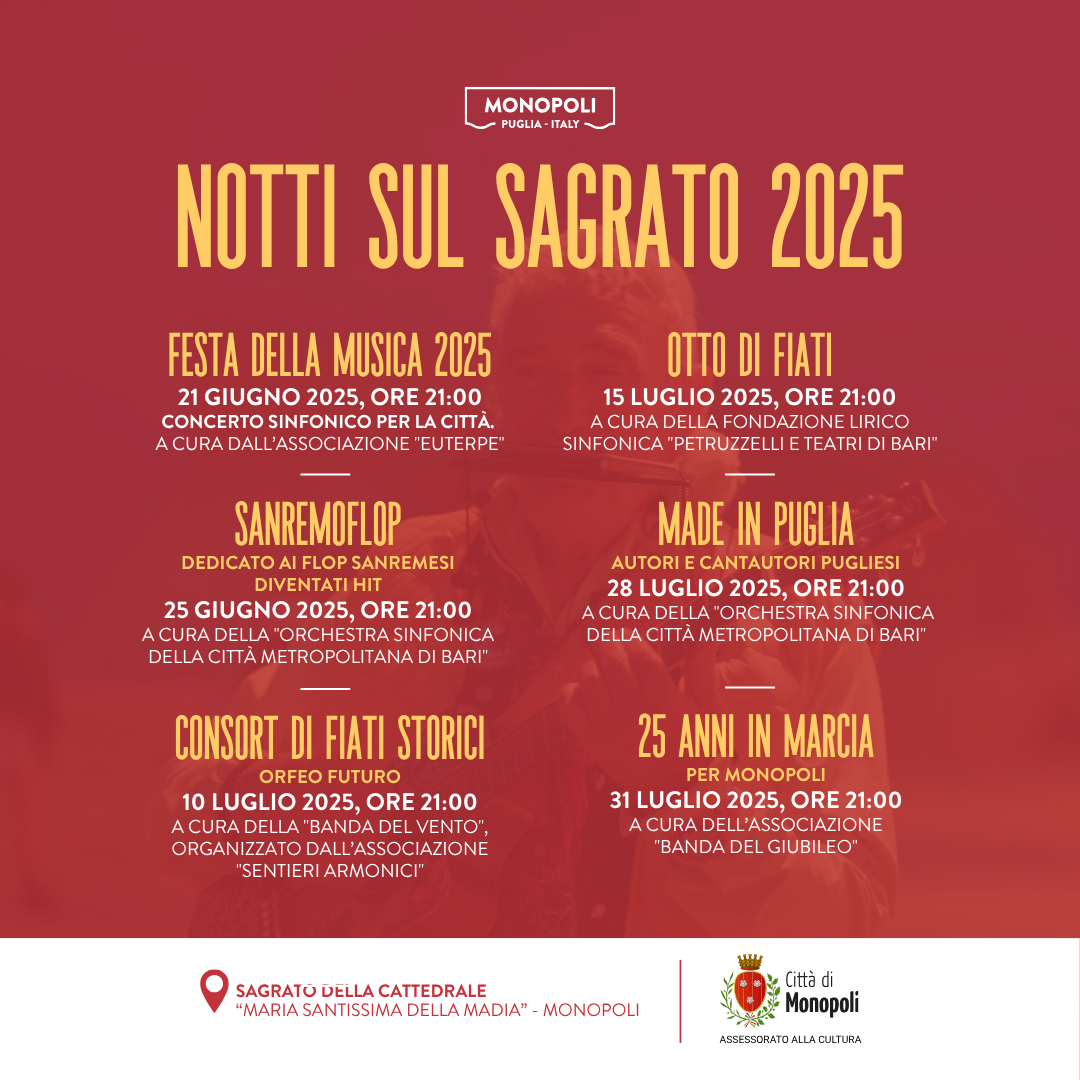
From 21 June 2025 six “Nights on the Cathedral Square”
20 June 2025Opening night with the preview of the Ritratti Festival and the Rota Conservatory Orchestra This year too, Monopoli is preparing to…
Read More
